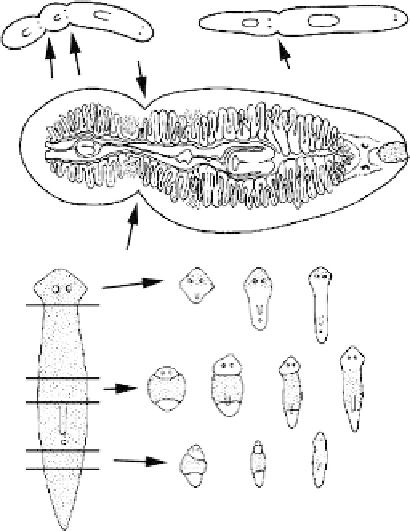Biology Reference
In-Depth Information
Spontaneous
fission
Ta il
Head
Figure 2.24
Regenerative capacity of the freshwater planaria
Dugesia tigrina
after
transverse cutting.
Source
: From
http://www.rzuser.uni-heidelberg.de/~bu6/Introduction03.html
.
regenerates the missing part. This in turn leads to the formation of two fully grown
planarians (
Figure 2.24
). When split, these worm fragments develop the missing part.
Reproduction through fragmentation occurs in sponges, cnidaria, and some
worms, as well as in some lower plants.
Reproduction by Budding
Reproduction by budding is characteristic for cnidarians and other lower inverte-
brates. The new individual starts as a protrusion in the parent's body (
Figure 2.25
).
The fact that reproduction by budding in lower invertebrates is not the exclusive
mode of reproduction, but rather an adaptive form of reproduction under changed
conditions in the environment, suggests that it might have been a complementary
adaptation rather than the “primitive” form of reproduction.
Sexual Reproduction—the Prevalent Mode of
Reproduction of Multicellulars
Sexual reproduction in eumetazoans is a complex physiological process that often
requires strict coordination in space and time of the development, maturation,

Search WWH ::

Custom Search